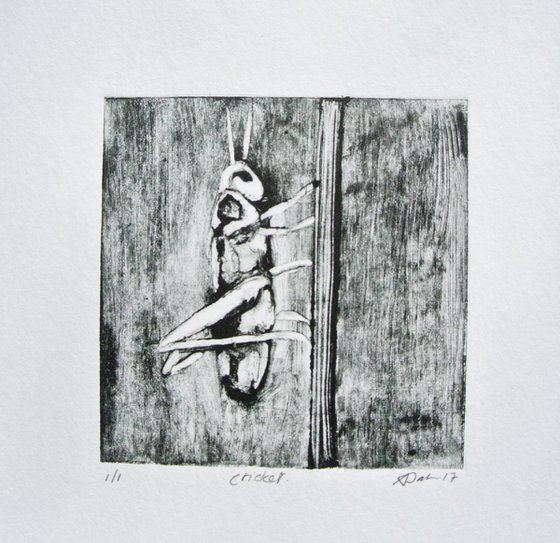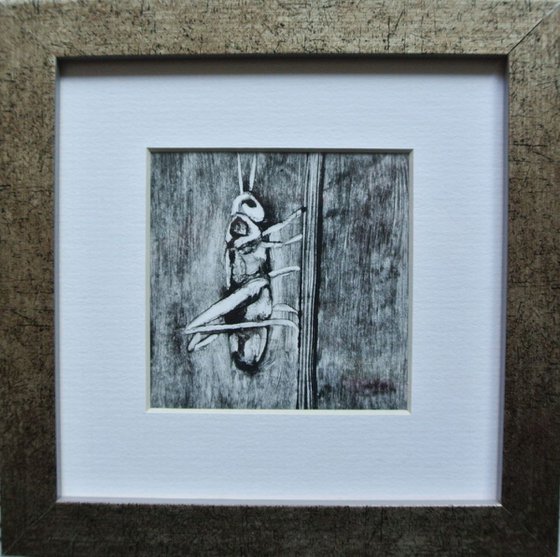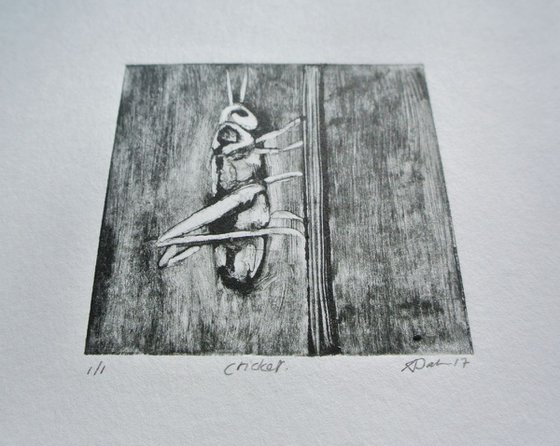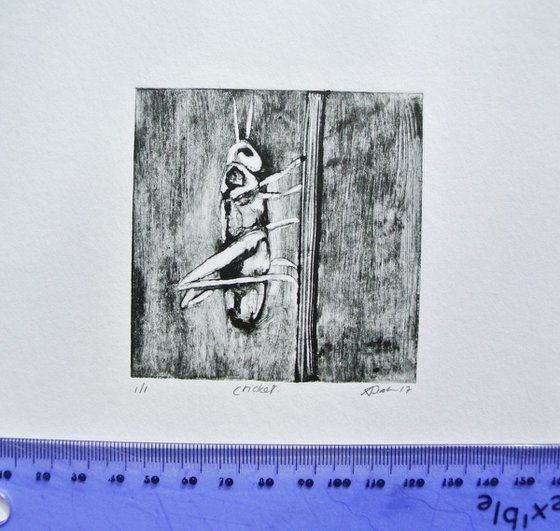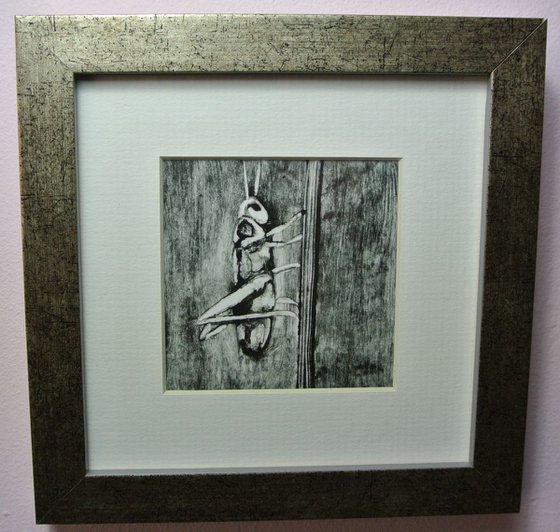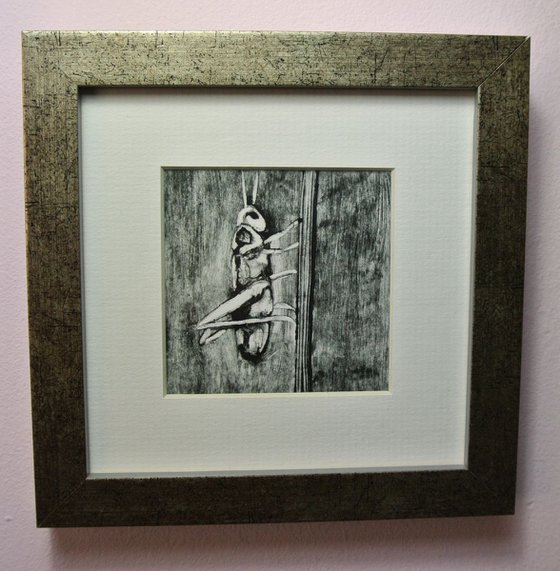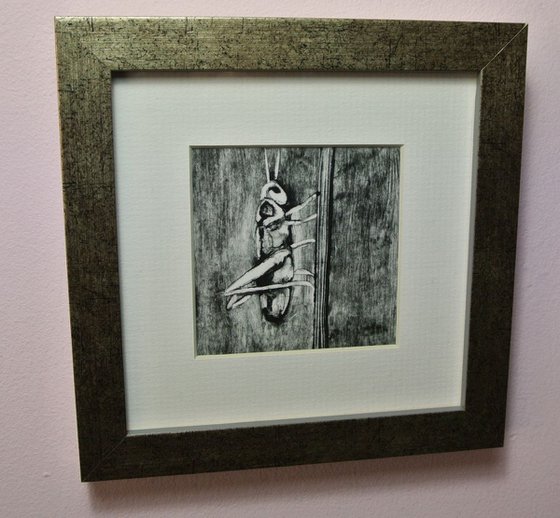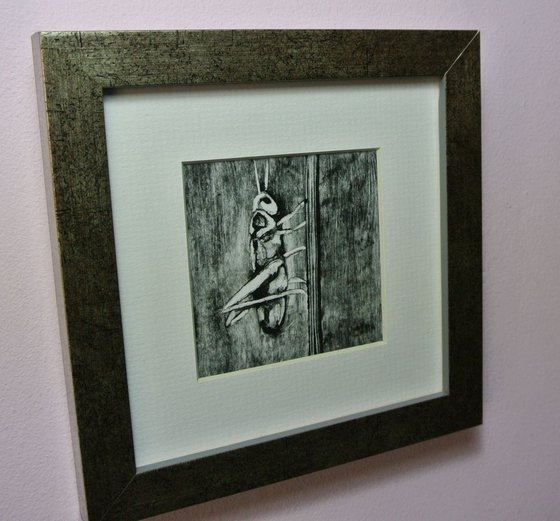- By medium
- By subject
- By budget
- Sales
- Gift cards
- Discover all art
- Artists
- Editors’ picks
- Ideas
Original artwork description:
A miniature mono-type of a cricket, clinging onto a stalk.
This work is framed in a solid wooden frame, shabby gold, with glass and acid free mount.
What is a mono-print?
Also known as the most painterly method among the printmaking techniques , a monoprint is essentially a printed painting. The characteristic of this method is that no two prints are alike; although images can be similar, editions are not possible.
Mono-printing is to make an impression on paper, the process only allowing one print to be made. There are many different techniques that can be described as mono-prints, from potato printing to screen-printing, the word does not describe the process but rather the amount of impressions that can be made.
This monoprint was created by rolling ink onto a zinc plate, whipping away the ink with a rag and brush to create an image. By using oil based inks the drying time allows several hours to work in details before the images must be printed. Once ready the print is placed face down on damp top quality watercolour paper and rolled through a printing press. The pressure of the printing press transfers the ink from the plate onto the paper.
Materials used:
Fabriano Paper, Oil Based Inks, Printing Press
Tags:
#framed_art #animal_print #framed_print #black_and_white #ready_to_hang #cricket_art #cricket_drawing #framed monotype #drawing #animal #birds #miniature #printmaking #monoprint #monotype #insect #cricket #animal_art #animal_artworkCricket Monotype, Framed Artwork Ready to Hang (2017)
Monoprint
by Alex Jabore
52 Artist Reviews
£45
- Monoprint on Paper
- One of a kind artwork
- Size: 15.2 x 15.2 x 2cm (framed) / 7.5 x 7.5cm (actual image size)
- Framed and ready to hang
- Signed on the front
- Style: Impressionistic
- Subject: Animals and birds
Original artwork description
A miniature mono-type of a cricket, clinging onto a stalk.
This work is framed in a solid wooden frame, shabby gold, with glass and acid free mount.
What is a mono-print?
Also known as the most painterly method among the printmaking techniques , a monoprint is essentially a printed painting. The characteristic of this method is that no two prints are alike; although images can be similar, editions are not possible.
Mono-printing is to make an impression on paper, the process only allowing one print to be made. There are many different techniques that can be described as mono-prints, from potato printing to screen-printing, the word does not describe the process but rather the amount of impressions that can be made.
This monoprint was created by rolling ink onto a zinc plate, whipping away the ink with a rag and brush to create an image. By using oil based inks the drying time allows several hours to work in details before the images must be printed. Once ready the print is placed face down on damp top quality watercolour paper and rolled through a printing press. The pressure of the printing press transfers the ink from the plate onto the paper.
Materials used:
Fabriano Paper, Oil Based Inks, Printing Press
Tags:
#framed_art #animal_print #framed_print #black_and_white #ready_to_hang #cricket_art #cricket_drawing #framed monotype #drawing #animal #birds #miniature #printmaking #monoprint #monotype #insect #cricket #animal_art #animal_artwork14 day money back guaranteeLearn more
